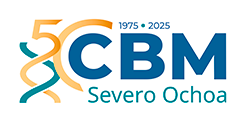Scientific Program
Physiological and pathological processes
RESEARCH GROUP
Biology of human stem cells in translational neuroscience

Marta Pérez Pereira
Our research focuses on developing 3D brain organoids from human stem cells to complement animal models and 2D cultures in neuroscience. By utilizing bioengineering techniques, we enhance the features of these organoids to study cell-cell interactions, aiming to create more accurate and reproducible models for designing therapies for neurodegenerative diseases.
Research
Research in animal models of neurodegenerative diseases has demonstrated that stem cells elicit beneficial effects through mechanisms such as brain plasticity, rather than mere cell replacement. However, responses varied significantly across species, underscoring the need for human-specific studies due to the unique characteristics of the human brain.
Our group investigates the biology of stem cells as a source of human neurons and as a therapeutic tool in animal models of neurological disorders, including Parkinson’s disease. To explore human neuron responses, we focus on generating A9 dopaminergic neurons, which are critically affected in Parkinson’s disease. We have explored various culture surfaces and found that both material composition and surface topography at nano and micro scales play crucial roles in developing innovative culture systems.
Building on these findings, our efforts are directed towards developing human brain organoids to better understand complex neuronal circuits and diverse neuron phenotypes. In alignment with efforts to minimize the use of laboratory animals for basic research and to expand our knowledge of human neural tissue biology, we have enhanced cerebral organoids with improved features for patterning studies, thereby enhancing their utility in preclinical research.
Current endeavors include refining scaffold designs by integrating materials and topographies validated in 2D cultures, harnessing their abilities to promote neuronal growth and support electrical conductivity. As brain organoids mature, the lack of glial cell support presents a challenge, prompting initiatives to introduce oligodendrocytes (OLs) derived from human stem cells. These OLs are intended to survive, mature, and potentially myelinate the neuronal networks within organoids, thereby enhancing their functional maturity.
In summary, our research aims to advance stem cell therapies through a nuanced understanding of human neuron responses, culminating in the development of sophisticated brain organoid models that faithfully replicate human brain complexity. These models enable detailed studies on neurological disorders and facilitate the exploration of therapeutic interventions.
Group members

Marta Pérez Pereira
Lab.: 305 Ext.: 4650
pereiram(at)cbm.csic.es

Brina Stancic
Lab.: 305 Ext.: 4650
bstancic(at)cbm.csic.es

Inés Anguiano Vara
Lab.: 305 Ext.: 4650
ianguiano(at)cbm.csic.es

Cristina Ulecia Morón
Lab.: 305 Ext.: 4650
cristina.ulecia(at)cbm.csic.es

Rafael Romero Pérez
Lab.: 305 Ext.: 4650
rromero(at)cbm.csic.es

Paula Paredes Mayoral
Lab.: 305 Ext.: 4650
paula.paredesm(at)cbm.csic.es
Selected publications

Multifactoriality of Parkinson’s Disease as Explored Through Human Neural Stem Cells and Their Transplantation in Middle-Aged Parkinsonian Mice
Anna Nelke et al.

Next generation human brain models: engineered
flat brain organoids featuring gyrification
Theresa S P Rothenbücher et al.

Pyrolytic Carbon Nanograss Enhances Neurogenesis and Dopaminergic Differentiation of Human Midbrain Neural Stem Cells
Afia Asif et al.

Transplanted Stem Cell-Secreted Vascular Endothelial Growth Factor Effects Poststroke Recovery, Inflammation, and Vascular Repair
Nobutaka Horie et al.





